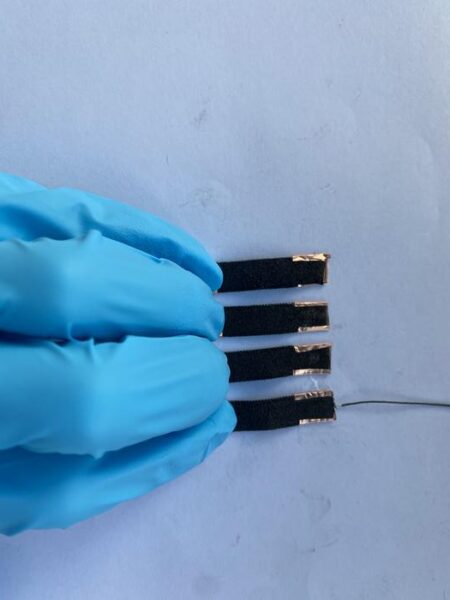Innovative Material Combines Energy Harvesting with Health Monitoring
Researchers at the University of Waterloo have developed a smart fabric that could revolutionize wearable technology. This innovative material can convert body heat and solar energy into electricity while simultaneously monitoring various health metrics, potentially eliminating the need for external power sources in many wearable devices.
The fabric, created by a team led by Professor Yuning Li from the Department of Chemical Engineering, represents a significant leap forward in the field of smart textiles. Unlike current wearable technologies that often rely on bulky battery packs or frequent recharging, this new material offers a self-sustaining solution that is more stable, durable, and cost-effective.
“We have developed a fabric material with multifunctional sensing capabilities and self-powering potential,” explains Li. “This innovation brings us closer to practical applications for smart fabrics.”
The potential applications for this technology are vast and varied. Imagine clothing that can keep you warm by harnessing solar energy, or shirts that can monitor your heart rate and body temperature without the need for separate devices. For athletes, this could mean performance-tracking gear that doesn’t require additional equipment or power sources.
From Health Monitoring to Environmental Sensing
One of the most promising applications of this smart fabric is in the realm of health monitoring. The material can detect temperature changes and incorporate various sensors to monitor pressure, chemical composition, and other metrics. This capability could lead to the development of smart face masks capable of tracking breath temperature and rate, as well as detecting chemicals in breath that might indicate the presence of viruses, lung cancer, or other health conditions.
The fabric’s ability to harvest energy from both body heat and solar power opens up new possibilities for continuous, long-term monitoring without the need for frequent battery changes or recharging. This could be particularly beneficial for patients requiring ongoing health monitoring or for use in remote or resource-limited settings.
Professor Li, who directs Waterloo’s Printable Electronic Materials Lab, emphasizes the importance of this development in the context of advancing AI technology and data collection. “AI technology is evolving rapidly, offering sophisticated signal analysis for health monitoring, food and pharmaceutical storage, environmental monitoring, and more,” he notes. “However, this progress relies on extensive data collection, which conventional sensors, often bulky, heavy, and costly, cannot meet. Printed sensors, including those embedded in smart fabrics, are ideal for continuous data collection and monitoring.”
The research, conducted in collaboration with Professor Chaoxia Wang and PhD student Jun Peng from Jiangnan University’s College of Textile Science and Engineering, showcases the potential of integrating advanced materials like MXene and conductive polymers with cutting-edge textile technologies.
Why it matters: This breakthrough could significantly impact various sectors, from healthcare to sports and beyond. The ability to continuously monitor health metrics without obtrusive devices could lead to earlier detection of health issues and more personalized healthcare. In environmental monitoring, smart fabrics could provide real-time data on air quality or exposure to harmful substances. For the average consumer, it could mean more comfortable, functional, and sustainable wearable technology.
The research team is now focusing on further enhancing the fabric’s performance and integrating it with electronic components. Future developments may include a smartphone app to track and transmit data from the fabric to healthcare professionals, enabling real-time, non-invasive health monitoring for everyday use.
As this technology continues to evolve, we may soon see a world where our clothing not only keeps us comfortable but also actively contributes to our health and well-being, all while harvesting its own energy from the environment around us.
If our reporting has informed or inspired you, please consider making a donation. Every contribution, no matter the size, empowers us to continue delivering accurate, engaging, and trustworthy science and medical news. Independent journalism requires time, effort, and resources—your support ensures we can keep uncovering the stories that matter most to you.
Join us in making knowledge accessible and impactful. Thank you for standing with us!

